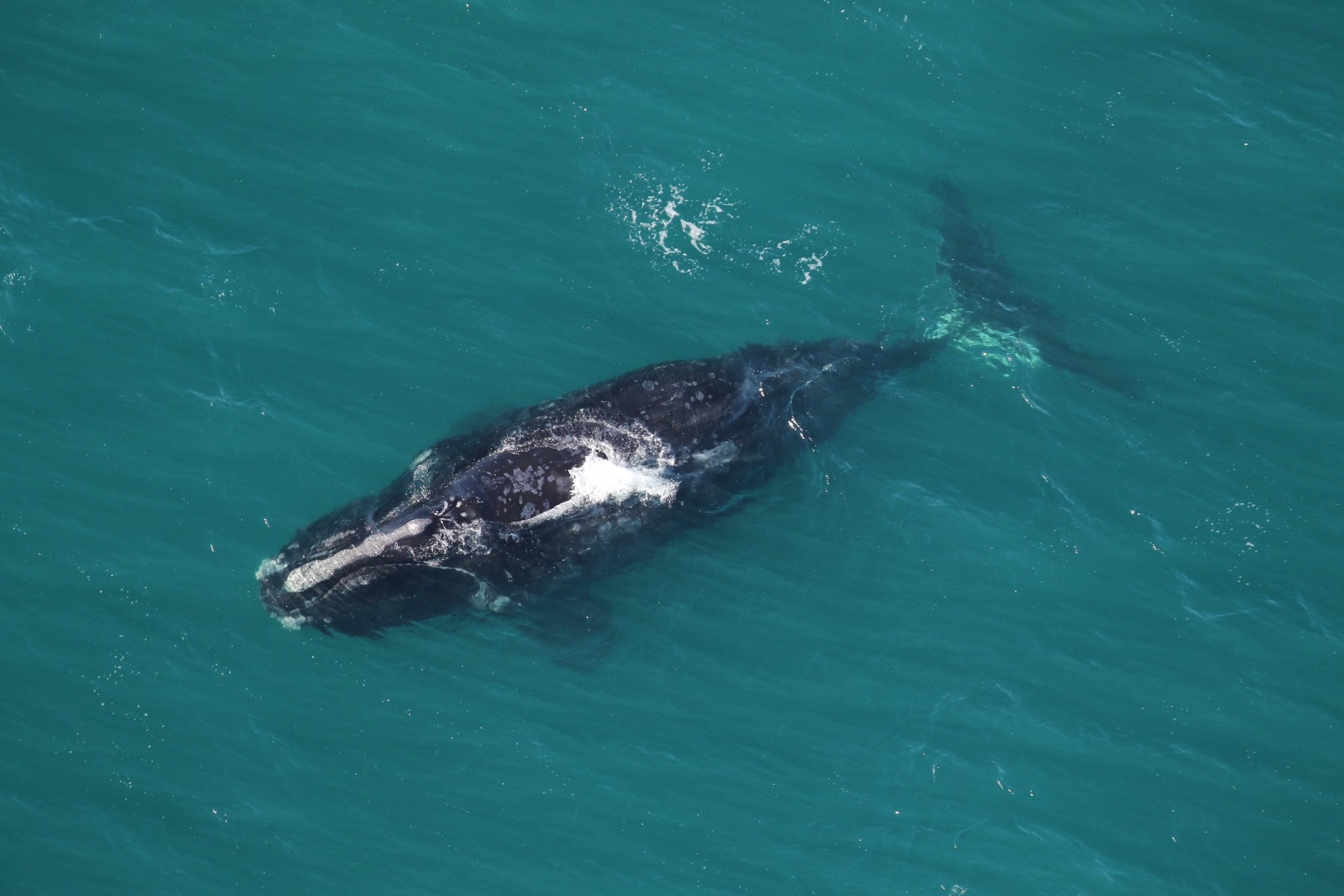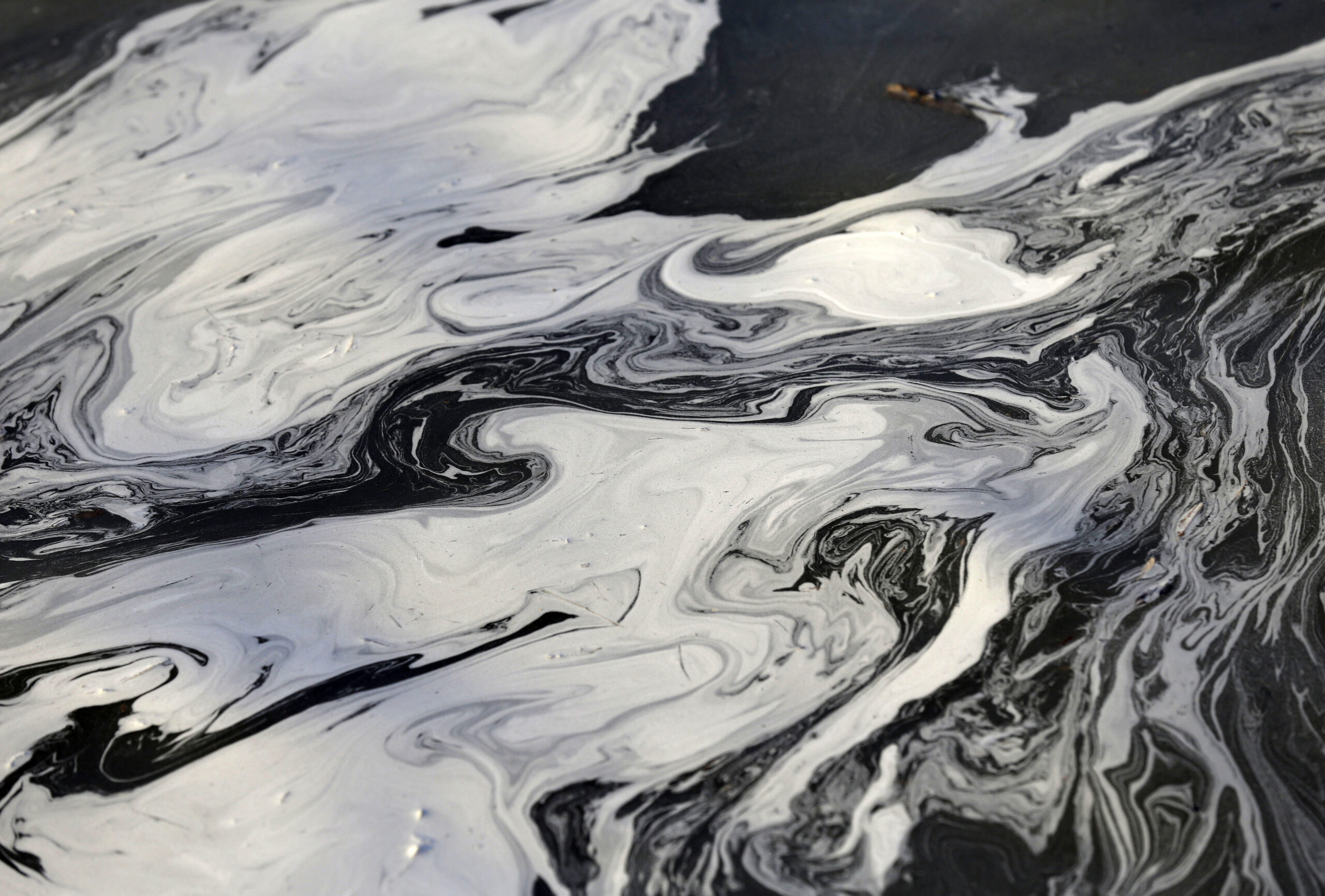Right Whales Should Be Back Near Ga. Coast Soon, After A Bad Few Years

A right whale is spotted Jan. 31 traveling south offshore of Little St. Simons Island. The North Atlantic right whales spend their winters near the Georgia coast raising their calves, but the last few years have been bad ones for the endangered animals.
Sea to Shore Alliance, taken under NOAA permit #20556
Now is the time when North Atlantic right whales start migrating back to the Georgia coast. The whales spend their winters here raising their calves, but it’s been a bad few years for the endangered animals.
There are only about 450 North Atlantic right whales left. And during the last few years, they have been having fewer calves. Last year, researchers didn’t spot a single calf.
That might be less troubling if so many adult whales weren’t dying, said Clay George, a wildlife biologist with the Georgia Department of Natural Resources.
“The problem isn’t just that fewer calves — and last year zero calves — are being born, the problem is also that whales are dying at unprecedented rates,” George said. “For a long-lived species like a right whale, which should be living for a century, they can handle low calving years for short periods of time as long as the adults are able to survive. But that’s not what’s happening right now.”
Read More: Searching For Right Whale Calves Off Georgia’s Coast
Many adult whales have been killed after getting tangled in fishing gear. Others have been hit by ships.
“One of the things that’s starting to become clear is just how much rope is in the water especially in the Northeast and Canada,” George said. “Eighty percent of all right whales have scars from being entangled at least once.”
Seventeen whales died last year. Another three have been confirmed so far this year, all killed by fishing gear, according to the National Oceanic and Atmospheric Administration. Most of the dead whales were found off the coast of Canada. The whales in U.S. waters were all in the mid-Atlantic or New England; none in the Southeast.
The area of the whales’ calving grounds off the coast of Georgia and northern Florida is protected. The highest numbers of whales are typically there in January and February, according to George, but they begin arriving in early December and stay around as late as March.







